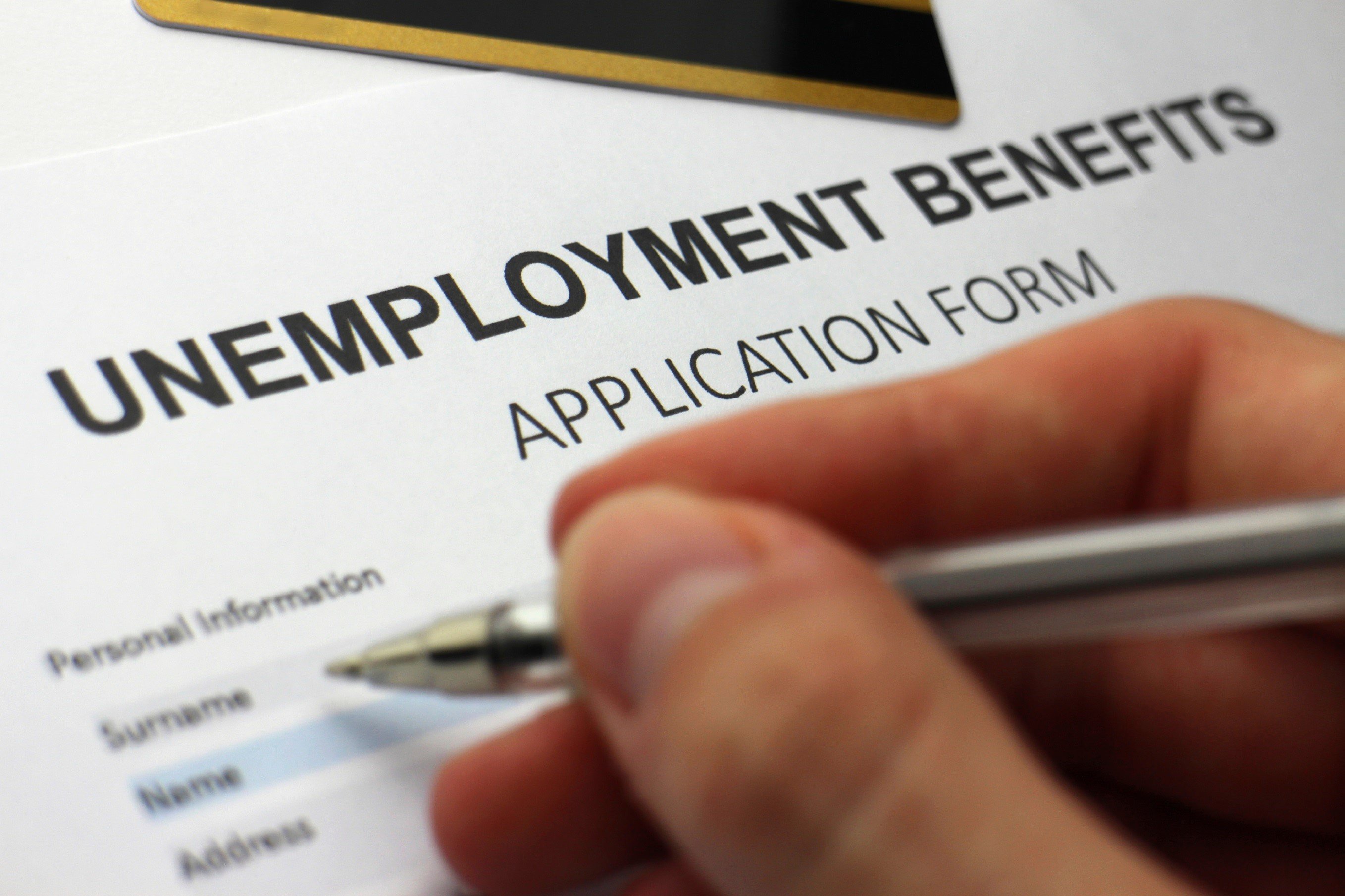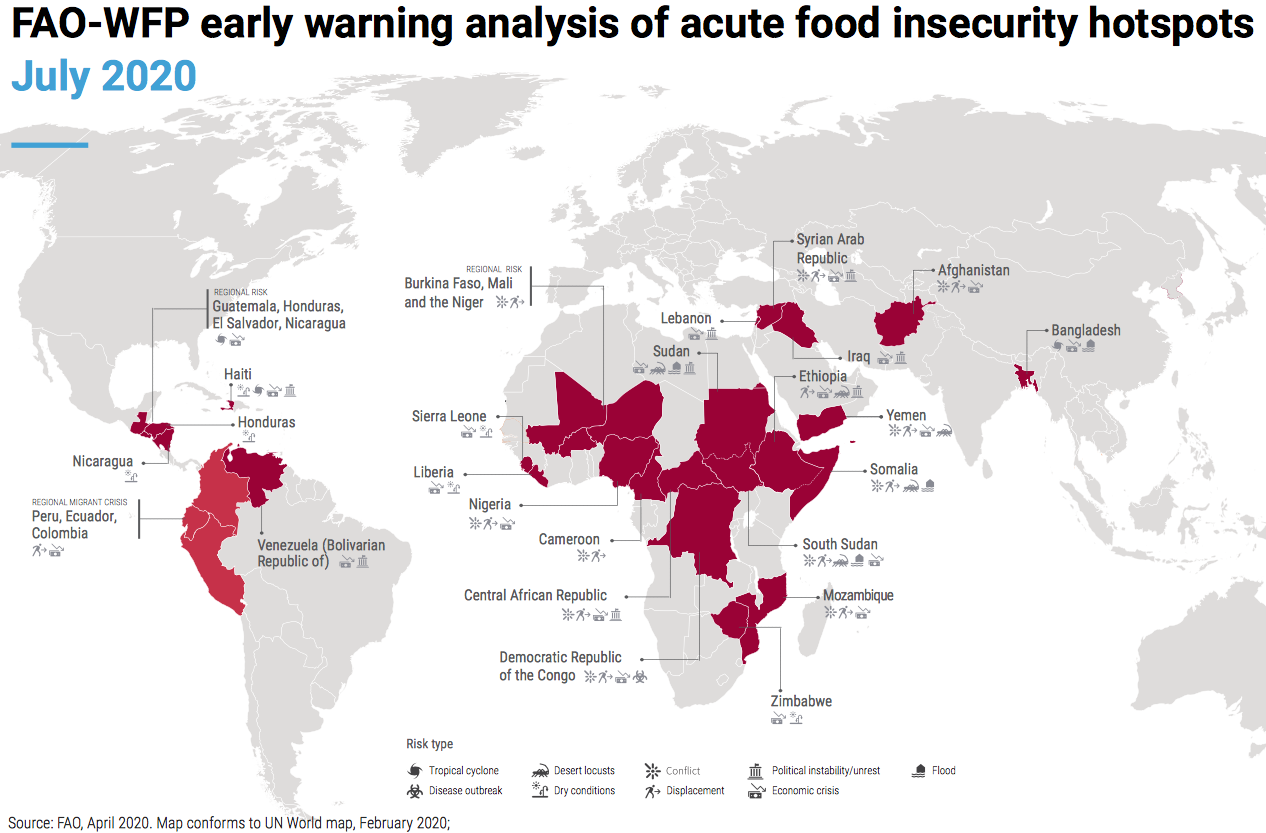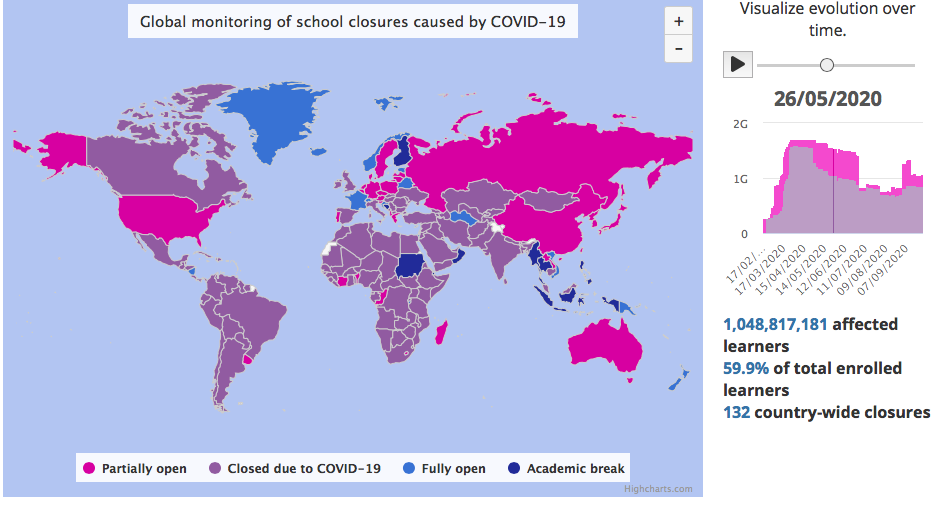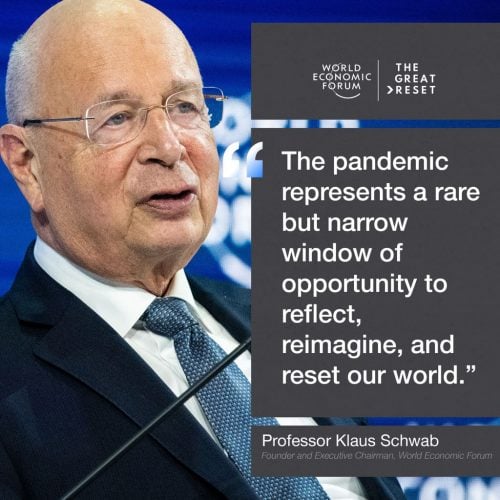Combating the Virus: Mass Unemployment is Not the Solution
Millions of people around the World are victims of the fear campaign. Panic prevails. Day after day, the persistent impact of media disinformation concerning the Killer Virus is overwhelming.
Fear and panic, coupled with outright lies prevent people from understanding the logic of these far-reaching economic and social policies.
On March 11, 2020 the WHO declared a Worldwide pandemic, requiring the lockdown and closure of the national economies of 193 member states of the United Nations, with devastating economic and social consequences: unemployment, poverty, despair.
These authoritarian measures imposed on millions of people were accepted outright. Public opinion was led to believe that the measures were a solution to combating the “Killer Virus”.
The Second Wave
And now, seven months later, a Covid-19 “Second Wave” has been announced. The proposed solution to combating the “killer virus” is to prevent and postpone the reopening of the national economy, coupled with the enforcement of social distancing, the wearing of the face mask, etc.
Needless to say: at the outset of this Second Wave, the global economy is already in a state of chaos. While the reports fail to reveal the depth and seriousness of this global crisis, the evidence (which is still tentative and incomplete) speaks for itself.
The “Real Economy” and “Big Money”
Why are these Covid lockdown policies spearheading bankruptcy, poverty and unemployment?
There is an important relationship between the “Real Economy” and “Big Money”, namely the financial establishment.
What is ongoing is a process of concentration of wealth, whereby the financial establishment, (i.e. the multibillion dollar creditors) are slated to appropriate the real assets of both bankrupt companies as well as State assets.
The “Real Economy” constitutes “the economic landscape” of real economic activity: productive assets, agriculture, industry, services, economic and social infrastructure, investment, employment, etc.
The real economy at the global and national levels is being targeted by the lockdown and closure of economic activity. The Global Money financial institutions are the “creditors” of the real economy.
The closure of the global economy has triggered a process of global indebtedness. Unprecedented in World history, a multi-trillion bonanza of dollar denominated debts is hitting simultaneously the national economies of 193 countries.
Under the so-called “New Normal” Great Global Reset put forth by the World Economic Forum (WEF), the creditors (including billionaires) will eventually buy out important sectors of the real economy as well as take over bankrupt entities. The creditors will also seek to acquire ownership and/or control of “public wealth” including the social and economic assets of the State through a massive indebtedness project.
“Global Governance”
A system of “Global Governance” controlled by powerful financial interests including corporate foundations and Washington think tanks oversees decision-making at both the national and global levels. The late David Rockefeller defined global governance as “Supranational Sovereignty of an intellectual elite and bankers”.
The Global Governance scenario imposes a totalitarian agenda of social engineering and economic compliance. It constitutes an extension of the neoliberal policy framework imposed on both developing and developed countries. It consists in scrapping “national autodetermination” and constructing a Worldwide nexus of pro-US proxy regimes controlled by a “supranational sovereignty” (World Government) composed of leading financial institutions, billionaires and their philanthropic foundations. (Michel Chossudovsky, August 2020)
In the sections below we briefly review the dramatic impacts of the closure of the global economy focussing on bankruptcies, poverty, unemployment, the outbreak of famines and education. Most of the figures quoted below are from UN sources, which tend to understate the seriousness of the global crisis.
The Wave of Bankruptcies
The wave of bankruptcies triggered by the closure of the World economy affects both Small and Medium Sized Enterprises (SME) as well as large Corporations. The evidence suggests that small and medium sized enterprise are literally being wiped out.
According to a survey by the International Trade Centre, quoted by the OECD, pertaining to SMEs in 132 countries:
two-thirds of micro and small firms report that the crisis strongly affected their business operations, and one-fifth indicate the risk of shutting down permanently within three months. Based on several surveys in a variety of countries, McKinsey (2020) indicates that between 25% and 36% of small businesses could close down permanently from the disruption in the first four months of the pandemic. (OECD Report, emphasis added)
In the US, the bankruptcy process is ongoing. According to a group of academics in a letter to Congress:
“we anticipate that a significant fraction of viable small businesses will be forced to liquidate, causing high and irreversible economic losses,. “Workers will lose jobs even in otherwise viable businesses. …
“A run of defaults looks almost inevitable. At the end of the first quarter of this year, U.S. companies had amassed nearly $10.5 trillion in debt — by far the most since the Federal Reserve Bank of St. Louis began tracking the figure at the end of World War II. “An explosion in corporate debt,” Mr. Altman said” (NYT, June, 16, 2020).
With regard to small businesses in the US:
almost 90% of small businesses experienced a strong (51%) or moderate (38%) negative impact from the pandemic; 45% of businesses experienced disruptions in supply chains; 25% of businesses has less than 1-2 months cash reserves.“ (OECD)
The results of a survey of over 5 800 small businesses in the United States:
… shows that 43% of responding businesses are already temporarily closed. On average, businesses reduced their employees by 40%. Three-quarters of respondents indicate they have two months or less in cash in reserve. … (OECD)
Mass Unemployment is Now Worldwide
Global Unemployment
In an August report, the International Labour Organization (ILO) confirms that:
The COVID-19 crisis has severely disrupted economies and labour markets in all world regions, with estimated losses of working hours equivalent to nearly 400 million full-time jobs in the second quarter of 2020, most of which are in emerging and developing countries…(ILO, 2020a). …
Among the most vulnerable are the 1.6 billion informal economy workers, representing half of the global workforce, who are working in sectors experiencing major job losses or have seen their incomes seriously affected by lockdowns.
The COVID‐19 crisis is disproportionately affecting 1.25 billion workers in at-risk jobs, particularly in the hardest-hit sectors such as retail trade, accommodation and food services, and manufacturing (ILO, 2020b). Most of these workers are self-employed, in low-income jobs in the informal sector… Young people, for example, are experiencing multiple shocks including disruption to education and training, employment and income, in addition to greater difficulties in finding jobs.
The ILO does not focus on the political causes of mass unemployment, namely the actions taken by the governments, allegedly with a view to resolving the Covid pandemic.
Moreover, the ILO tends to underestimate both the levels as well as the increase in unemployment.
Unemployment in Latin America
In Latin America, the average unemployment rate was estimated at 8.1 per cent at the end of 2019. The ILO states, that it could rise by a modest 4 to 5 percentage points to 41 million unemployed.
In absolute numbers, these rates imply that the number of people who are looking for jobs but are not hired rose from 26 million before the pandemic to 41 million in 2020, as announced by ILO experts…
These estimates of the ILO and the World Bank are misleading. According to the Inter American Development Bank (IDB), the increase in unemployment for the Latin American region is of the order of 24 million, with jobs losses in Colombia of the order of 3.6 million, Brazil, 7.0 million and Mexico 7.0 million.
Even these figures tend to underestimate the dramatic increase in unemployment. And the situation is likely to evolve in the months ahead.
According to a Survey conducted by the Instituto Nacional de Estadística y Geografía (INEGI) the increase in unemployment in Mexico was of the order of 12.5 million in April, i.e. in the month following the March 11, 2020 lockdown and closure of the national economy.
Unemployment in the US

In the US, “more than 30 million people, over 15% of the workforce, have applied for unemployment benefits… ” (CSM, May 6, 2020)
Nothing remotely like what’s gone on since January ever happened before in the US.
For the 27th straight week, over one million working-age Americans filed claims for unemployment insurance (UI).
Numbers for the past week include 870,000 who applied for regular state UI, along with another 630,000 applying for Pandemic Unemployment Assistance (PUA) — the federal program for workers not eligible for UI. (Stephen Lendman, September 25, 2020)
Unemployment in the European Union (EU)
“Unemployment across the whole of the European Union is expected to rise to nine percent in 2020, in the wake of the Coronavirus pandemic and subsequent lockdowns enforced by national governments”.
According to official EU figures:
Greece, Spain and Portugal … have once again seen large rises in youth unemployment since the start of the pandemic. Greece saw a surge from 31.7 percent in March to 39.3 percent in June, while Spain and Portugal had similar increases, from 33.9 percent to 41.7 percent and 20.6 percent to 27.4 percent, respectively.
The Outbreak of Famines
Famines have erupted in at least 25 developing countries according to UN sources. According to the FAO July 17, 2020
The UN’s Food and Agriculture Organization (FAO) and World Food Programme (WFP) identifies 27 countries that are on the frontline of impending COVID-19-driven food crises, as the pandemic’s knock-on effects aggravate pre-existing drivers of hunger.
No world region is immune, from Afghanistan and Bangladesh in Asia, to Haiti, Venezuela and Central America, to Iraq, Lebanon, Sudan and Syria in the Middle East to Burkina Faso, Cameroon, Liberia Mali, Niger, Nigeria, Mozambique, Sierra Leone and Zimbabwe in Africa.
The joint analysis by FAO and WFP warns these “hotspot countries” are at high risk of – and in some cases are already seeing – significant food security deteriorations in the coming months, including rising numbers of people pushed into acute hunger.

The COVID-19 pandemic has potentially far-reaching and multifaceted indirect impacts on societies and economies, which could last long after the health emergency is over. These could aggravate existing instabilities or crises, or lead to new ones with repercussions on food security, nutrition and livelihoods.
With over two billion people, or 62 percent of all those working worldwide, employed in the informal economy according to ILO data, millions of people face a growing risk of hunger. Earnings for informal workers are estimated to decline by 82 percent, with Africa and Latin America to face the largest decline (ILO 2020). ( FAO , p. 6)
Food Insecurity in America
Nutrition and food insecurity is not limited to developing countries. In the US, according to Stephen Lendman:
“Around one in four US households experienced food insecurity this year — over 27% of households with children.
A Northwestern University Institute for Policy Research study estimates the number of food insecure households with children at nearly 30%. Black families are twice as food insecure as their white counterparts. Latino households are also disproportionately affected.”
Education: The Impacts on Our Children
The very foundations of civil society are threatened. UNICEF estimates that 1.6 billion children and adolescents are affected by the closure of schools Worldwide.
“As the COVID-19 pandemic has spread across the globe, a majority of countries have announced the temporary closure of schools, impacting more than 91 per cent of students worldwide… Never before have so many children been out of school at the same time…
Colleges and universities are also paralysed. Students are denied the right to education. While UNESCO confirms that more than one billion learners are affected, it offers no concrete solution or critique. The official narrative imposed by the so-called “private/public partnership” which is imposed on national governments is adopted at face value.
Closures have been implemented in 132 countries. See diagram below.

click here to access UNESCO report.
Let us be under no illusions: People’s lives are being destroyed
And this not due to the V the Virus. It’s a political decision by corrupt governments, acting on behalf of dominant financial institutions.
The Second Wave
And now, the financial establishment has instructed governments to implement what is tantamount to a second bankrupcy program using the pretext and justification that the number of Covid positive cases has increased.
All forms of social activity are affected including family reunions, weddings and funerals, public gatherings, not to mention the closure of schools, universities, museums, sports and cultural events. Police state measures are now being applied to enforce compliance. And people accept!
At the outset of the Second Wave, postponing the reopening of the global economy will indelibly contribute to wiping out (regional and local) small and medium sized enterprises worldwide, while also precipitating the bankruptcy of entire sectors of the World economy including airlines, hotel chains and the tourist industry.
The fear campaign has once again gone into high gear.
Official statistics based on faulty and manipulated estimates of so-called “confirmed” Covid positive cases constitute the basis for justifying these diabolical measures.
V the virus is presented as the Threat. But the Virus has no direct impact on key economic variables.
What is at stake is unprecedented: It’s a global neoliberal agenda carried out by corrupt governments on behalf of the financial establishment.
“The New Normal” and the Great Global Reset
Let us be under no illusions. Due the string of bankruptcies, the destruction of the informal urban sector, not to mention abysmal poverty and the collapse of purchasing power, it is unlikely that mass unemployment will be resolved under the “new normal”, particularly in view of the neoliberal policies which are slated to be imposed by the global creditors.
The World Economic Forum (WEF) is now calling upon the adoption of a Great Global Reset, which will be managed by the global creditors.
According to Peter Koenig The Great Global Reset consists in:
“shoveling of more assets from the lower echelons to a small elite, through debt enslavement – shifting from consumer capitalism to Green (consumer) capitalism – and all with an allure of friendliness towards the environment and the world population. …
[According to] WEF founder and executive chairman Klaus Schwab, (June June 3, 2020):
“The world must act jointly and swiftly to revamp all aspects of our societies and economies, from education to social contracts and working conditions… Every country, from the United States to China, must participate, and every industry, from oil and gas to tech, must be transformed. In short, we need a ‘Great Reset’ of capitalism.”
“You notice, the Great Reset is about preserving capitalism… ” (emphasis added)
The fear campaign has become a political instrument, a mechanism of social subordination. People across the land, nationally and internationally have reluctantly accepted the official consensus, which is a big lie.
It is unfortunate that many progressive intellectuals who have an understanding of politics and the workings of global capitalism have endorsed the official corona narrative. The closing down of the national economy leading to poverty and mass unemployment is a derogation of workers’ rights.
Common sense tells us that the closure of the global economy destroys people’s lives.
Disrupting the fear campaign constitutes the first step towards reversing the tide.








